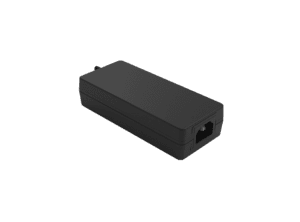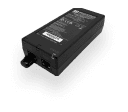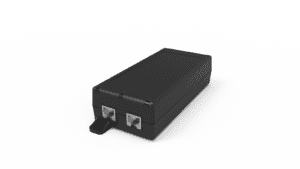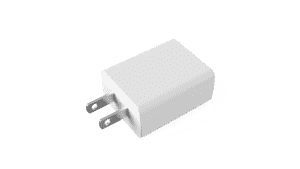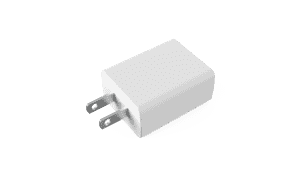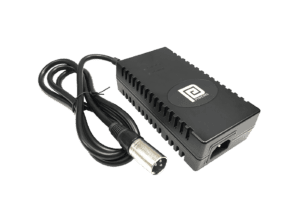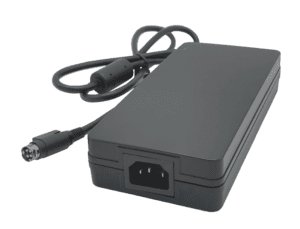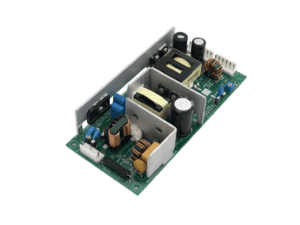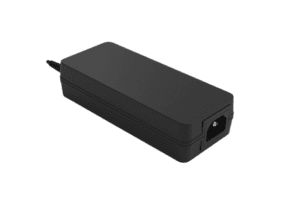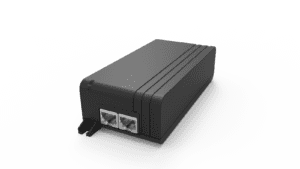BLOG
Industrial Ethernet: Streamlining Power and Data for Optimal Network Performance
Table of contents

What is Industrial Ethernet?
Industrial Ethernet is a specialized form of Ethernet used in industrial environments for automation and control systems. Unlike traditional Ethernet used in office and home networks, Industrial Ethernet is designed to handle the harsh conditions, rigorous demands, and critical requirements of industrial settings.
What’s the Difference Between Industrial and Regular Ethernet?
The primary distinctions between Industrial Ethernet and Regular Ethernet lie in their environmental resilience, reliability, real-time communication capabilities, security, and specialized features. Industrial Ethernet is specifically designed to meet the rigorous demands of industrial applications, while Regular Ethernet is optimized for general-purpose use in controlled environments.
Environmental Resilience
Industrial Ethernet components are built to withstand harsh environmental conditions such as extreme temperatures, humidity, dust, and vibration. These ruggedized components ensure reliable operation in factories, refineries, and outdoor installations, where standard Ethernet would typically fail.
Reliability
Industrial Ethernet networks emphasize reliability to ensure continuous and stable operation of critical industrial processes. This is achieved through redundant network paths, robust error detection and correction mechanisms, and enhanced quality of service (QoS) protocols to prioritize industrial traffic.
Real-Time Communication Capabilities
One of the most crucial differences is Industrial Ethernet’s support for real-time communication. Industrial applications often require deterministic communication, meaning data is transmitted and received within a guaranteed timeframe. This is essential for automation, where precise timing is critical. Deterministic communication ensures that data packets are delivered on time, every time, reducing latency and jitter.
Specialized Protocols
To achieve deterministic communication, Industrial Ethernet employs specialized protocols, each tailored to meet specific industrial requirements:
PROFINET®: Designed for high-speed, real-time communication, PROFINET supports automation applications with strict timing requirements. It is widely used in manufacturing and process automation.
EtherNet/IP®: This protocol adapts standard Ethernet technology for industrial applications, providing real-time control and information. It is highly scalable and integrates seamlessly with existing Ethernet infrastructure.
EtherCAT®: Known for its exceptional performance in terms of speed and precision, EtherCAT is ideal for applications requiring ultra-fast data exchange and low cycle times, such as motion control.
SERCOS III: This protocol is specifically designed for high-performance motion control applications. It offers real-time capabilities and deterministic data transmission, making it suitable for complex, synchronized automation systems.
POWERLINK®: POWERLINK extends standard Ethernet with real-time capabilities, providing deterministic data transfer and high availability. It is used in applications requiring high-speed, real-time data communication, such as robotics and industrial automation.
Security
Industrial Ethernet networks incorporate advanced security measures to protect against cyber threats and ensure the integrity of critical data. This includes features like encryption, secure authentication, and access control mechanisms tailored for industrial environments.
In summary, while Regular Ethernet is designed for general-purpose networking in controlled environments, Industrial Ethernet is engineered to meet the stringent requirements of industrial applications, offering enhanced environmental resilience, reliability, real-time communication capabilities, security, and specialized features through protocols like PROFINET®, EtherNet/IP®, EtherCAT®, SERCOS III, and POWERLINK®.
What are the Benefits of Using Industrial Ethernet?
Industrial Ethernet has revolutionized modern manufacturing. But what makes it so special? Well, for starters, it’s incredibly reliable. Reliability is key in any industrial environment. Imagine the chaos if your manufacturing line stopped because of network failure. With Industrial Ethernet, you can wave goodbye to such nightmares.
Reliability and Robustness
Industrial Ethernet systems are designed to withstand the harshest conditions. Think about it – dust, extreme temperatures, and even vibrations from heavy machinery can’t bring these networks down. Traditional networks would crumble under such stress, but not Industrial Ethernet systems. Industrial Ethernet incorporates redundancy and fault tolerance features like redundant power supplies and failover mechanism to ensure continuous operation even during hardware failures. This makes it the go-to choice for many worldwide.
Integration with IT Systems
One of the standout features of Industrial Ethernet is its ability to integrate with existing IT systems. This integration means you can manage your industrial operations and office tasks from a single network. It’s like having a one-stop shop for all your networking needs.
Best Practices
Implementing Robust Security Measures
Security in industrial networks is non-negotiable. Always use firewalls, VPNs, and encryption to protect sensitive data from cyber threats.
Regular Maintenance and Monitoring
Regularly check your network for any issues. Routine maintenance ensures your network remains in top-notch condition, minimizing downtime.
Training for Staff
Ensure your staff is well-trained in handling Industrial Ethernet systems. Proper training can prevent mishaps and optimize network performance.
Why is Streamlining Power and Data Important for Industrial Networks?
In the fast-paced world of industrial operations, efficiency is king. Streamlining power and data in industrial networks is crucial for maintaining high productivity levels and ensuring smooth operations.
Increased Efficiency
Streamlined power and data mean that operations run more smoothly and efficiently. Imagine if your machines could communicate seamlessly without any interruptions. That’s what you get with streamlined networks. It minimizes downtime and maximizes productivity.
Cost-Effectiveness
Streamlined networks are more cost-effective. By reducing the number of cables and simplifying the network architecture, you save on both material and labor costs. It’s like hitting two birds with one stone. Who doesn’t love a good cost-saving measure?
Enhanced Reliability
A streamlined network is a reliable network. With fewer components, there are fewer points of failure. This enhances the overall reliability of the network. Picture a smooth-running operation with minimal hiccups. That’s the beauty of a streamlined network.
Best Practices
Use Integrated Systems
Using integrated systems can further streamline your power and data networks. Integrated systems are designed to work seamlessly together, reducing complexity and improving efficiency.
Regular Audits
Conduct regular audits of your network to identify any inefficiencies or potential issues. This proactive approach can help maintain optimal performance.
Invest in Training
Invest in training your staff to handle streamlined networks efficiently. Well-trained staff can make a significant difference in maintaining a smooth-running operation.
CLIENT'S QUOTE
Phihong's Power-Over-Ethernet solutions have transformed our network, boosting efficiency and reducing costs. Their seamless integration has simplified both installation and maintenance.
What Are the Key Components of Industrial Ethernet Systems?
Industrial Ethernet systems are made up of several key components that work together to create a robust and reliable network. Understanding these components is crucial for setting up an efficient system.
Ethernet Injectors
Power over Ethernet injectors are vital in Industrial Ethernet systems, allowing power and data to travel over a single cable. They come in active and passive types. Active injectors adjust power levels for connected devices, while passive injectors provide a fixed power level. These injectors help extend network reach and power remote devices, ensuring reliable operation in environments with limited power sources.
Ethernet Switches
Ethernet switches are the backbone of any Ethernet network. They manage data traffic and ensure that data packets are directed to the correct destination. Think of them as traffic cops for your network. Without switches, data would be lost in the chaos.
Ethernet Cables
Cables are the veins of the network, carrying data to and from devices. Industrial Ethernet cables are designed to withstand harsh conditions, making them more durable than standard Ethernet cables. They’re like the super soldiers of the cabling world.
Routers
Routers connect different networks together, allowing them to communicate. In an industrial setting, routers are crucial for integrating different parts of the operation. Imagine trying to run a factory with no communication between departments. That’s what you’d have without routers.
Network Interface Cards (NICs)
NICs are installed in devices to enable them to connect to the Ethernet network. They’re like the network’s handshake, allowing devices to communicate with each other. No NICs, no network.
Best Practices
Use Industrial-Grade Components
Always use industrial-grade components designed to withstand harsh environments. This ensures the longevity and reliability of your network.
Proper Installation
Proper installation is key to the performance of your Ethernet system. Make sure cables are installed correctly and components are securely connected.
Regular Maintenance
Regularly maintain your Ethernet system to ensure it’s running smoothly. This includes checking for any wear and tear on cables and ensuring switches and routers are functioning correctly.
What Industries Benefit Most from Industrial Ethernet Solutions?
Industrial Ethernet solutions are incredibly versatile and can benefit a wide range of industries. Let’s explore some of the key sectors that gain the most from these solutions.
Manufacturing
The manufacturing industry benefits immensely from Industrial Ethernet, which supports a range of machinery such as CNC machines and assembly lines. Reliable and high-speed data communication is essential for maintaining efficiency and minimizing downtime in these environments. Industrial Ethernet ensures seamless operation of manufacturing equipment, boosting productivity and enabling precise control over production processes.
Automotive
In the automotive industry, robotics and automation play a crucial role in assembly lines and production processes. Industrial Ethernet is vital for managing robotic arms and automated systems, ensuring real-time data communication and precise control. This technology helps streamline manufacturing operations, improve safety, and enhance the quality of automotive components.
Logistics and Warehousing
For logistics and warehousing operations, Industrial Ethernet supports scanning devices and conveyor systems. These systems rely on accurate and fast data transmission to manage inventory and streamline the movement of goods. Industrial Ethernet enhances operational efficiency by ensuring reliable communication between scanning devices and conveyor belts, leading to better inventory management and reduced operational delays.
Industrial Automation
Industrial automation across various sectors relies on Industrial Ethernet to control and monitor complex systems. This includes automation equipment such as sensors and actuators used in processes ranging from production lines to energy management. Industrial Ethernet provides the necessary reliability and speed for seamless automation, ensuring smooth operations and effective process control.
Building Management
In building management, particularly for HVAC systems, Industrial Ethernet is essential for efficient operation and monitoring. It enables precise control of heating, ventilation, and air conditioning systems, ensuring optimal climate conditions and energy efficiency. Reliable data communication provided by Industrial Ethernet supports effective management and maintenance of building systems.
Smart City Infrastructure
Smart city infrastructure benefits significantly from Industrial Ethernet, which is used to manage and integrate various urban systems such as traffic lights, surveillance cameras, and public transportation networks. Industrial Ethernet supports the high-speed, reliable communication needed for real-time data processing and control, enabling smarter, more responsive city services. This technology helps improve urban management, enhance safety, and optimize resource use, contributing to more efficient and connected cities.
Best Practices
Tailor Solutions to Industry Needs
Different industries have different requirements. Tailor your Ethernet solutions to meet the specific needs of your industry. This ensures optimal performance and efficiency.
Invest in Training
Invest in training your staff to handle industry-specific Ethernet solutions. Proper training can prevent issues and improve overall performance.
Regular Upgrades
Stay updated with the latest advancements in Ethernet technology. Regular upgrades can keep your network running at peak performance.
How Do You Choose the Right Industrial Ethernet Products for Your Business?
Choosing the right Industrial Ethernet products can be daunting, but it’s crucial for setting up an efficient network. Here’s a guide to help you make the best choice.
Assess Your Needs
Start by assessing your business needs. What are the specific requirements of your operations? Do you need high-speed data transfer, robust security, or seamless integration with existing systems? Understanding your needs is the first step in choosing the right products.
Consider the Environment
The environment in which your network will operate plays a significant role in product selection. For harsh environments, opt for industrial-grade components that can withstand extreme conditions. Imagine installing standard components in a dusty, high-temperature factory. Not a good idea, right?
Check Compatibility
Ensure that the products you choose are compatible with your existing systems. Compatibility issues can lead to inefficiencies and increased costs. It’s like trying to fit a square peg into a round hole. Make sure everything fits perfectly.
Look for Scalability
Choose products that can scale with your business. As your operations grow, your network should be able to expand without major overhauls. It’s like building a foundation that can support future expansion.
Best Practices
Do Your Research
Research different products and compare their features. Read reviews, ask for recommendations, and consult with experts if needed. This will help you make an informed decision.
Invest in Quality
Quality products might be more expensive initially but can save you money in the long run due to their durability and reliability. Think of it as a long-term investment.
Plan for the Future
Consider your future needs when choosing products. Opt for solutions that offer room for growth and technological advancements.
Best Practices for Implementing Industrial Ethernet Solutions
Implementing Industrial Ethernet solutions requires careful planning and execution. Here are some best practices to ensure a successful implementation.
Conduct a Thorough Site Survey
Before implementing any solution, conduct a thorough site survey. This helps you understand the environment and identify any potential challenges. It’s like knowing the battlefield before the battle. Being prepared is half the victory.
Create a Detailed Implementation Plan
A detailed plan is crucial for successful implementation. Outline each step, assign responsibilities, and set timelines. This ensures that everyone is on the same page and knows what to do.
Invest in Training
Proper training is essential for the successful operation of your Ethernet network. Ensure that your staff is well-trained in handling and maintaining the network. Think of it as arming your troops with the knowledge they need to succeed.
Use High-Quality Components
High-quality components are the backbone of a reliable network. Invest in industrial-grade components that can withstand harsh conditions and deliver consistent performance.
Regular Maintenance and Monitoring
Regular maintenance and monitoring are key to keeping your network in top shape. Conduct routine checks to identify and address any issues before they escalate. It’s like regular health check-ups for your network.
Plan for Future Growth
Always plan for future growth. Choose scalable solutions and leave room for expansion. This ensures that your network can grow with your business.
Explore More with Phihong USA
As we conclude our exploration of PoE technology, it’s clear that this field is experiencing unprecedented growth. For over 50 years, Phihong has been at the forefront of innovation, serving Fortune 500 companies across various industries as a leading power supply manufacturer for OEMs.
Phihong’s leadership, particularly in advanced technologies like Power over Ethernet, extends to active contributions in the development of IEEE PoE standards. This involvement underscores our commitment to innovation and dedication to providing cutting-edge power solutions that will shape the future of technology.
In addition to custom power supply solutions, Phihong offers a diverse range of products, including:
- Power over Ethernet (PoE) Solutions: PoE injectors, splitters, media converters, and more
- AC/DC Adapters and Power Supplies: USB adapters, desktop adapters, industrial-grade power supplies, and more
- Battery Chargers: Chargers for lithium-ion and lead-acid batteries
- Medical Power Supplies: Specialized power supplies that meet stringent healthcare requirements
By partnering with Phihong USA, you are choosing a trailblazer in power technology. If you’re an OEM looking for a custom PoE solution or just looking for a quality product, call us today: 510-445-0100 or email us at usasales@phihongusa.com. We look forward to collaborating with you.

Contact Our Team Today!
Our dedicated sales team and international partners are prepared to support you with your latest projects and initiatives globally.
FAQs
What is Industrial Ethernet?
Industrial Ethernet refers to the adaptation and use of Ethernet technology in industrial settings to provide reliable, robust, and high-speed network solutions. Unlike standard Ethernet used in office environments, Industrial Ethernet is specifically designed to withstand the harsh conditions commonly found in industrial settings, such as extreme temperatures, humidity, vibration, and electromagnetic interference. It ensures continuous operation and minimal downtime, which is crucial for industrial applications. Industrial Ethernet solutions are utilized across a wide range of industries, including manufacturing, energy, transportation, and healthcare, to support automation systems, real-time data exchange, and efficient communication between devices and control systems.
What are the key benefits of Industrial Ethernet?
Industrial Ethernet offers numerous benefits that make it the preferred choice for many industries. One of its primary advantages is high reliability, as it provides stable and uninterrupted network connectivity even in challenging environments. Scalability is another key benefit, allowing networks to grow and adapt to increasing demands without significant overhauls. Industrial Ethernet solutions are also known for their easy integration with existing systems, enabling seamless upgrades and expansions. Cost-effectiveness is achieved through the use of standardized components and simplified cabling requirements. Enhanced security features protect critical data and systems from cyber threats. Finally, flexibility in network design allows for tailored solutions that meet specific operational needs, making Industrial Ethernet a versatile and valuable asset in various industrial applications.
How can Industrial Ethernet reduce installation costs?
Industrial Ethernet can significantly reduce installation costs through its efficient use of Power over Ethernet (PoE) technology. PoE allows a single Ethernet cable to carry both power and data to network devices, eliminating the need for separate power supplies and additional cabling. This reduction in cabling not only simplifies the installation process but also decreases the amount of material required. Consequently, labor costs are lowered because fewer cables need to be installed, and the overall setup time is reduced. Additionally, the streamlined cabling process minimizes the likelihood of installation errors and reduces ongoing maintenance expenses. These cost savings make Industrial Ethernet an attractive option for industries looking to optimize their network infrastructure economically.
What industries benefit from Industrial Ethernet solutions?
A wide range of industries benefit from the implementation of Industrial Ethernet solutions due to their need for reliable and high-performance network connectivity. In the manufacturing sector, Industrial Ethernet supports automation and control systems, ensuring efficient production processes and real-time monitoring. The energy industry relies on these solutions for robust communication networks in power plants and renewable energy installations. Transportation systems, including railways, airports, and smart traffic management, use Industrial Ethernet to enhance safety and operational efficiency. In the healthcare sector, Industrial Ethernet enables the reliable operation of medical devices and patient monitoring systems, contributing to improved patient care. These industries, among others, depend on the robustness, reliability, and flexibility that Industrial Ethernet provides to maintain smooth and efficient operations.

